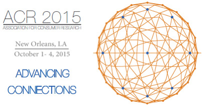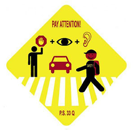CRCNS PI Meeting 2018
Jan 08, 2018
UC Berkeley is proud to host the CRCNS 2018 PI Meeting. This is the annual meeting to bring together recipients of the NSF sponsored Collaborative Research in Computational Neuroscience. It will take place from June 13–June 15, at UC Berkeley’s Lawrence Hall of Science, located in the hills above the main campus with a spectacular 180 degree view of the San Francisco Bay.


ACR 2015 Consumer Neuroscience Roundtable
Oct 18, 2015
A bit delayed but here are some thoughts on the consumer neuroscience roundtable at ACR 2015. One of the notable aspects was the involvement of industrial participants. I found it alternatively depressing and invigorating. First the depressing part. The involvement of the industry participants really highlighted for me the gulf between what industry wants and what academia can deliver. This really underscores the lack of a clear value chain that connects basic researchers and practitioners.
In a mature and functional product development value chain, there is a virtuous cycle where basic research creates new possibilities, which are exploited and refined to fill some need, which in turn creates more demand for basic research.

But in a new or dysfunctional one, basic researchers create possibilities that are not exploited, for a variety reasons. Alternatively, industry want deliverables that cannot be satisfied, for a variety of reasons. It’s like the old Tolstoy quote, “Every happy family is happy in the same way. Every unhappy family is unhappy in its own way.” Except instead of Anna Karenina, we get (i) moonshots in the sense of “if we can do X, everything is going to be different”, and (ii) vaporware, “everything is going to be different!
The really depressing part is that, instead of thinking strategically about closing this gap, everyone is being asked to be all things to all people. Academic researchers are told that, “Show that your methods works in the way that industry would want to use them,” while practitioners are told that, “Show that your methods work and provide scientific proof.”
Now, both of those requests are perfectly reasonable in themselves. Nobody can argue against them. But imagine if the pharmaceutical or any other field worked this way. A chemist finds some new molecule, instead of passing it along to the next part of the chain, they need to find their own disease target, then do their own trials, and perhaps then sell it to hospitals and market to doctors and patients.
THESE THINGS DON’T HAPPEN IN A VACCUM.
Okay, now the (cautiously) optimistic part. Even given so much pessimism, marketers and businesses remain intrigued and excited by neuromarketing. Even without much strategic planning, there are optimistic signs that neuroscience can indeed deliver value. Nothing like “pushing the buy button”, but something more interesting. Imagine what can happen with a bit of planning, coordination, and division of labor.
In a mature and functional product development value chain, there is a virtuous cycle where basic research creates new possibilities, which are exploited and refined to fill some need, which in turn creates more demand for basic research.

But in a new or dysfunctional one, basic researchers create possibilities that are not exploited, for a variety reasons. Alternatively, industry want deliverables that cannot be satisfied, for a variety of reasons. It’s like the old Tolstoy quote, “Every happy family is happy in the same way. Every unhappy family is unhappy in its own way.” Except instead of Anna Karenina, we get (i) moonshots in the sense of “if we can do X, everything is going to be different”, and (ii) vaporware, “everything is going to be different!
The really depressing part is that, instead of thinking strategically about closing this gap, everyone is being asked to be all things to all people. Academic researchers are told that, “Show that your methods works in the way that industry would want to use them,” while practitioners are told that, “Show that your methods work and provide scientific proof.”
Now, both of those requests are perfectly reasonable in themselves. Nobody can argue against them. But imagine if the pharmaceutical or any other field worked this way. A chemist finds some new molecule, instead of passing it along to the next part of the chain, they need to find their own disease target, then do their own trials, and perhaps then sell it to hospitals and market to doctors and patients.
THESE THINGS DON’T HAPPEN IN A VACCUM.
Okay, now the (cautiously) optimistic part. Even given so much pessimism, marketers and businesses remain intrigued and excited by neuromarketing. Even without much strategic planning, there are optimistic signs that neuroscience can indeed deliver value. Nothing like “pushing the buy button”, but something more interesting. Imagine what can happen with a bit of planning, coordination, and division of labor.
2015 Association for Consumer Research
Oct 05, 2015

- How presentation of information affects consumer decisions in the real word: There is a lot of handwringing in basic sciences about the relevance of research for the "real world". Suzanne Shu presented some work on social security savings decisions and how different forms of presentation of information affects their savings decisions. Seems like a really natural area for consumer researchers. Standard economic theory provides very little guidance, and consumer researchers probably know more about this than anyone else.
Value of interdisciplinary research: Perhaps my favorite session was the roundtable on interdisciplinary research, and broadly on the future of the discipline of consumer research. My impression is that in many other fields this type of discussion is done behind closed doors by a bunch of VSPs (very serious persons), so it's refreshing to see these discussions in person. Broadly, I think this is excellent news for those of us in neuromarketing/consumer neuroscience.
- Broader training for students across disciplines: This might seem obvious, but one rarely hears that from psychology, and I dare say never from economics.
- Increasing the value of conceptual/theory work: Consumer research is almost exclusively empirical these days. This one is going to be hard to change. Biology is iin a similar position. Not sure what to do about that one.
- Need for educating reviewers and editors: I think this one is the most encouraging sign for me. There was a serious conversation about how to encourage innovative research without lowering standards. Again, seems so obvious, but really hard given the impetuousness of academics to get anyone to recognize the problem, let along think about solutions.
Early Career Award
Sep 30, 2015
In other news, I was awarded the Early Career Award at the 2015 Society for Neuroeconomics conference. Unfortunately I had to leave shortly after the awards ceremony, and couldn't buy folks at the conference a drink, so here is an open offer on one drink for anyone at the conference passing through Berkeley!
2015 Society for Neuroeconomics Conference
Sep 27, 2015

So it was great to be back at Neuroecon after a 2 year absence due to teaching conflicts. Here are some broader trends that I found particularly exciting:
- Animal models of “stuff that we used to think of as special to humans”. Not long ago, it seems that any discussions of animal cognition and behavior begins and ends with a defensive remark about the dangers of anthropomorphizing. By looking into the neural and molecular mechanisms, we can start critically test those tantalizing analogies that come out of surface similarities. We now sophisticated talks about prosocial behavior in monkeys and rodents, monkeys doing the marshmallow test, and (no joke, in all the good ways) a rodent stock market(!).

- Attention and decision-making. Someone recently mentioned that the most valuable commodity in the modern economy is your attention. But understanding how attention influences decision-making has proven incredibly challenging. So it’s exciting to see a number of talks and posters on this topic. There’s probably no better time in history to be studying these questions.

1An amusing exception to this comes from a LinkedIn comment in response to a neuromarketing article that goes something like, “The brain is so yesterday. Why don’t you write about microbiomes instead? That’s where the exciting stuff is at!” With friends like this, who needs enemies!